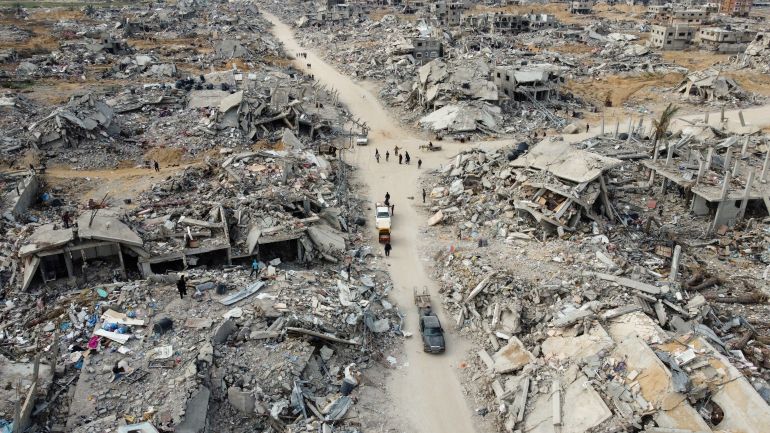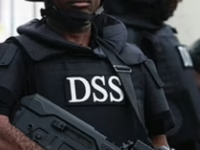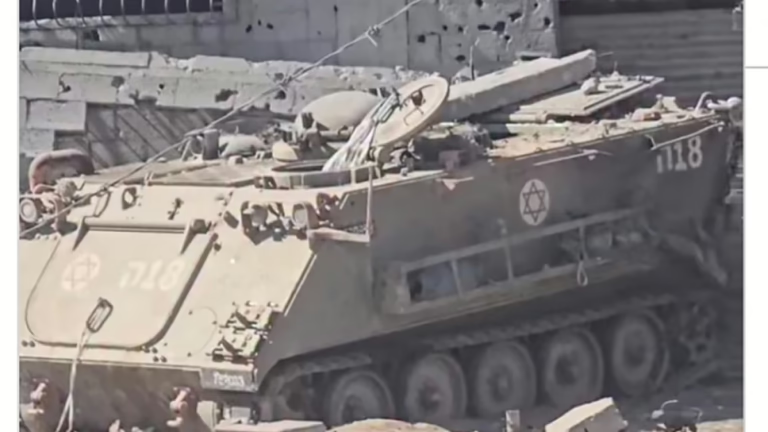Gaza City – Following the ceasefire agreement between Israel and Hamas, thousands of residents have cautiously returned to their homes in Gaza City. Their primary goal is to evaluate the destruction, recover what remains, and begin the arduous process of reconstruction.
In areas such as Jabalia, Sheikh Radwan, and Abu Iskandar, people are confronting neighborhoods reduced to rubble. Among the debris lie unexploded robotic devices-silent remnants of the recent conflict that continue to pose a grave threat.
Uncertainty looms as residents remain unaware of the exact locations of these dormant machines or the proper precautions to take if encountered, intensifying the anxiety surrounding their return.
Robotic Explosives: A New Menace
Since May 2024, the northern Gaza region has been haunted by the presence of these so-called “exploding robots,” first deployed by the Israeli military in the Jabalia refugee camp. Their use escalated dramatically in the months leading up to the October ceasefire, with reports indicating that approximately 300 homes were destroyed daily in Gaza City and Jabalia alone.
These devices are armored vehicles loaded with explosives, maneuvered into position by armored bulldozers operated by Israeli forces. Once the soldiers retreat, the robots are remotely detonated, obliterating everything within their blast radius.
Details about the exact nature of the explosives remain unclear, but local civil defense officials estimate the destructive radius can extend up to 500 meters (about 550 yards), causing catastrophic damage to infrastructure and homes.
Devastation on a Personal Level
Sharif Shadi, a 22-year-old from Jabalia refugee camp, recalls the terrifying new sounds of war during Israel’s ground offensive last November. While familiar with the noise of airstrikes and artillery from years of conflict, the arrival of these robotic explosives introduced a chilling new terror.
Shadi describes how these machines would enter entire residential blocks and, moments later, reduce them to rubble. On one harrowing morning, he witnessed a robot being dragged into his neighborhood by a bulldozer. He fled but was caught in the blast’s aftermath, narrowly escaping death. Tragically, a friend accompanying him to the hospital was not as fortunate, completely obliterated by the explosion.
According to human rights organizations, the indiscriminate destruction caused by these devices classifies them as prohibited weapons, and their use in densely populated areas constitutes both war crimes and crimes against humanity. Despite this, Israeli authorities have neither confirmed nor denied their deployment, though some media outlets have reported on their existence.
Lingering Toxic Hazards and Respiratory Illnesses
The impact of these explosions extends beyond immediate physical destruction. Dr. Mohammed Abu Afash, head of the Palestinian Medical Relief Society in Gaza, highlights the dangerous aftermath: toxic fumes and noxious gases released by the blasts linger in the air, causing severe respiratory issues among the population.
Residents describe the smell as a harsh blend of burnt metal and gunpowder that clings to the lungs, making breathing difficult long after the explosions have ceased. Um Ahmed al-Dreimli, a mother of three from Gaza City’s Sabra neighborhood, recounts the terrifying experience of hearing the metallic rumble of the blasts, which felt unlike any previous attacks she had endured.

Strategic Use Ahead of Ground Invasion
Mohammed Abu Tamous, a spokesperson for the Civil Defence and Ambulance services, explains that these explosive robots are often used to clear the way for advancing troops by demolishing buildings and erasing recognizable landmarks. Their deployment has been widespread across northern Gaza, including areas such as Beit Hanoon, Tal az-Zaatar, and Shujayea.
Unlike traditional airstrikes, which may damage a few adjacent homes, these robots can obliterate entire rows of houses in a single blast. They are typically deployed in densely populated neighborhoods that have been encircled and cut off, preventing emergency responders from reaching victims promptly.
During the January ceasefire, rescue teams discovered an unexploded robot containing an unusual yellow paste-like substance, the nature of which remains unidentified but is distinct from conventional explosives.
As residents return, the presence of unexploded devices remains a critical concern. Civil defense teams can only cordon off affected areas and issue warnings, lacking the specialized equipment necessary for safe disposal. They rely on bomb disposal units, which require additional resources to operate effectively within Gaza.






















